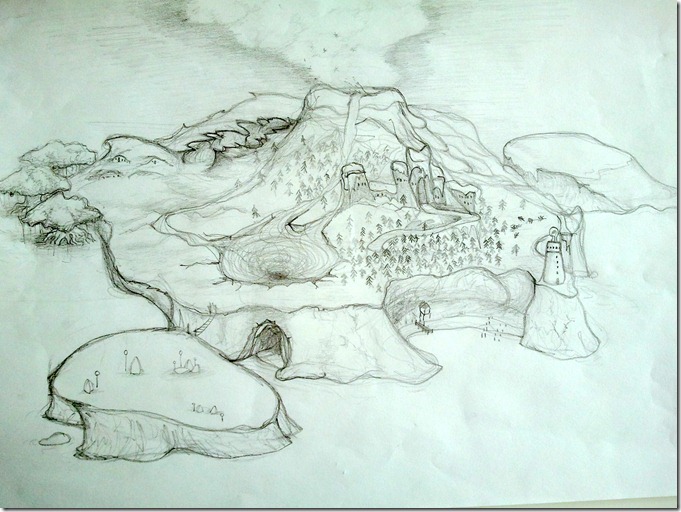Let’s recap the past few weeks:
There’s Stine, the girl I have to make a game prototype for in my User Experience & Prototyping course. And she likes visiting complex, lush worlds full of mysteries to discover.
And if her previous statements playing the participatory design game and the map she drew for the cultural probe, I also have her replies to a small 7 day challenge that I prepared for her in which she had to reply every day to one interesting question with a picture and a footnote.
When asked about a place where she would like to live in she sent me the picture above: an autumnal picture, comfortable, beautiful, peaceful and pretty, as she described it.
But at the same time she told me that if she wasn’t looking for a place to relax, she would rather be somewhere else.
Stine herself described the picture this way:
“A swamp full of creeps everywhere, small lamps, spirits. I wouldn’t want to live there, but I surely would want to go there to explore it. So to answer the question of what I’d do in there, then I’d probably be a traveler/ a messenger.”
So I would say it’s quite clear. Stine likes exploration at its best. Not just wandering around, but being in mysterious areas where she doesn’t know what she will find.
So when I finally got to interview her (and recorded the entire conversation for a later transcription and analysis) I knew where I had to look for answers.
If she likes exploration, what is it about it that really makes her tick?
Obviously my interview with her wasn’t just about that. There were several topics I needed to tackle, but the most interesting one so far was the exploration element. As soon as I asked her why she liked it so much she almost went bonkers. And that’s an understatement when we’re talking about Stine: she talks fast, excited and almost yelling at the most intense moments of her explanation (of why she likes exploring, go figure…) But it’s fun nevertheless, listening to her wishes of being the first one ever to discover a new place nobody has seen before, of reaching easter eggs hidden in the gameworld and be able to tell everyone about it (but not how exactly to find it, she really respects the spoilers part of a mystery).
She will revisit areas again and again if she gets even the smallest hint that something might have changed since the last time she was there (something that apparently happens very often in one of her favorite games: World of Warcraft).
Taking that last statement in consideration I asked her what would do if she found a place where she knows there is a secret but cannot reach it for some reason. Her reply was that such knowledge is enough to warm her up and she will probably try for a long time to reach that secret, no matter what. What if she cannot make it? Then she will look for help online, but once again, a guide without spoilers, that only tells how to reach the area, not what lies hidden in it.
This reminded me a lot about the Zelda games, where many times the player has the access blocked to certain areas even though the game seems to be open-world. Would this limitation bring Stine down? Not a chance! I asked her about it and she gave me an example taken out from GTA III, where there was this metro station that was locked. Being in front of the door, knowing that it can be opened somehow but she wasn’t able to made her really curious to know what she would find in there, and she kept trying for a while. But once she figured out she couldn’t do it, she thought that maybe the area would open up later in the game. What did she do then? Well… she came back after every mission to see if it was open already!
On the other hand she really dislikes games that try to give the feeling of an open-world but in reality they are full of invisible walls. Her example this time was Guild Wars, where she says that it’s mostly a world full of corridors, like a forest that has trees functioning as a full wall to prevent the player from going out of the area intended. About this she says it is really frustrating, because you could really see the limits of this world, them being very tangible.
As she said it with her own worlds: “Don’t give me an open world map and then tell me that I can’t go there, it’s annoying!”
So there you go, those are some of the insights that I got during Stine’s interview about why she likes exploration in games. Obviously there was a lot more we talked about, both about exploration and about other topics like her gaming habits (how often she plays games and when and where) and what kind of game characters she likes, or what the protagonist should be like.
More to come soon!






